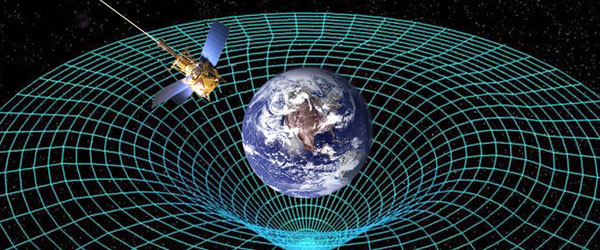Gravity 101 Part III
Part III already, how time flies. In the previous articles (Part I and Part II) we learned about being in orbit and touched on escaping orbit and flying away from the Earth. This week might take a look at getting into and out of orbit but first I want to cover another interest aspect of orbits and gravitation. I want to talk about tidal forces. This is going to be fun, I’m going to try and cover this topic without including math formulas (well maybe one or two).
Let’s jump into tides. Tidal forces are simply just addition and subtraction of the net gravitational forces between two bodies. Okay, okay, “simply” might not be the best word to use in that sentence, I think I was paraphrasing something I heard in a Physics class long ago. Let’s see if we can actually hit the “simplify” to some degree (isn’t it odd that “simplify” often means using many more words). Remember from Part I that the force of gravity is dependent on two things, the mass of the object and the distance to the object (I warned you about the equations, sorry). This is an old friend, Newton’s law of gravitation:
Before you drop out because of the equation give me a minute to explain the pieces of it and why it’s important for this discussion. F is the force; the pull of gravity, G is Newton’s gravitational constant, it’s just a number (well, they’re all numbers, but this one has the same value no matter where you are in the Universe; that’s why it’s called a constant). r is the distance between the centers of the two bodies, $latex m_1$ and $latex m_2$ are the masses of each of them. Let’s just suppose that $latex m_1$ is the Earth and $latex m_2$ is me. Though it might not be obvious to everyone, the equation above is symmetric. What that means is that F is the same whether it is I that is feeling it or the Earth. To break it down further, because of my mass, the Earth’s mass, and that I am roughly 3963 miles from the center of the Earth, the Earth exerts a force of 190 pounds on me. But, symmetrically and using the same equation, I exert a force of 190 pounds on the Earth (we both suck). Since the Earth’s mass is so much larger than mine, the force that I exert on the Earth is effectively zero. I can demonstrate that fact quite easily by jumping up, the Earth pulls me back down instead of me dragging the Earth up.
Let’s consider the slightly more complicated system where tidal forces occur. I am standing on the Earth and the Moon is orbiting around the Earth. If the Moon is directly above me the Earth is pulling me down but the Moon is pulling me up. The Moon is fairly massive but it is far away so its pull on me is not that large, and I weigh slightly less. For things more fluid like water, there is a noticeable rise:

Okay, that one should be fairly intuitive, now what happens when I’m on the opposite side of the Earth as the Moon? I bet that your gut reaction is that I will be heavier because the Earth and the Moon are pulling on me in the same direction. I’m sorry but you’re wrong, this is where the symmetry that I covered comes into play. What happens here, in simple terms, is that the Moon pulls the earth away from me, I feel about the same decrease in weight as if the Moon were directly over head. So now you’re thinking “what are you smoking Blaise?”
We generally think that the Moon orbits the Earth, but because the Moon’s mass is a fairly large proportion of the Earth’s (about 1/80th), they orbit about each other. This is not obvious to the casual observer because the center of the Earth’s orbit around the Moon is actually rather close to the center of the Earth. What this means is that the Earth’s orbit around the Moon manifests itself as a wobble in Earth’s rotation. Basically, the side of the Earth away from the Moon has to rotate a bit faster so I’m thrown away from the Earth:

This concept should not be all that foreign to you. If you are on a carousel, the further you are from the center, the greater the force you feel pulling you away from the center. That’s still a bit complicated; it’s probably easier to accept that the Moon pulls the Earth away from me but, if you squint and hold your mouth just right, you’ll realize that they are equivalent.
Now consider what happens when I am standing on the North (or South) pole. Note that the Moon’s orbit is approximately aligned with the Earth’s equator so, from the North pole, I am looking down (or up, depending on how you draw the diagram) at the moon and the force of the Moon’s gravity on me is at an angle compared to the what we were looking at earlier. The interesting thing about mathematical quantities that have directions (called vectors) is that they can be broken down into perpendicular components:

Thus, the Moon’s pull on me has a component that pulls me toward the center of the Earth, making me heavier (the component that pulls me towards the Moon just makes me do weird stuff when the Moon is full):

What all this means on the Earth is that the ocean waters, on the side of the Earth facing the Moon and opposite to it, rise slightly. Also, because the Earth is a ball (well I have fun there, I don’t know about you), in a circle perpendicular to the direction to the moon that passes through the North and South poles, the ocean waters sink a bit. These tidal pulls and pushes are not all that large in magnitude but keep in mind that the Earth is not a smooth ball entirely covered with water. There are continents and islands that intervene with the flow of water (dirt and rocks don’t move much). These features act to magnify these generally minuscule pulls and pushes in various areas around the Earth. That may seem hard to understand but it’s very similar to holding your thumb over the end of the garden hose, producing a spray instead of a trickle.
Besides making surfers happy, these tidal forces have other interesting effects to consider. Because the Earth is rotating the tidal pull from the moon drags the ocean waters away from the Earth’s rotation slowing it down. Don’t be too alarmed though, the slowing of the Earth’s rotation due to the Moon is very very small, it won’t make any notable difference for a few million years. On the flip side, the Earth’s gravity imposes a drag on the Moon’s rotation. Since the Moon is so much smaller than the Earth the Moon’s rotation has settled into an equilibrium where its rotational period is exactly the same as its orbital period. We always see the same hemisphere of the Moon from the Earth.
The Moon is said to be “tidally locked” to the Earth. This is a feature that satellite designers use to stabilize orbital devices. If you extend masses above and below a satellite then, from previous discussions, the upper mass is moving too fast for its altitude so it wants to move out and slow down; the inner mass is moving too slowly for its altitude, it want to move in and speed up:

In this fashion, an orbital platform can be forced into a tidally locked arrangement where the lower end of the satellite is always pointed directly towards the Earth. Another consequence of this situation is that, for a large orbital object like a space station, people in the outer mass will fell a force pulling them away from the Earth and people in the inner mass will feel a force pulling them toward the Earth (the further they are from the central mass, the greater the force). Not everything in orbit is weightless, even on a fairly small platform like the International Space Station there are micro-gravitational forces felt at the upper and lower extremities.
According to my editors I’m now pushing the limit on the number of words allowed in one article, I feel a bit like Mozart. Sadly I will have to leave the real rocket science of getting into and out of orbit for a fourth article, I hope that you will forgive me. So, what have we learned today?
- The Earth sucks, the Moon sucks, I suck, everybody and everything sucks. If you have mass, you suck.
- There is no dark side of the Moon, only the side that we never see.
- I can’t always blame the Moon for my weight.
- Not everything in orbit is weightless.
- I need to hire a graphic artist.





